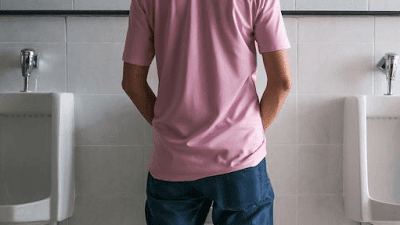Signs and symptoms of rarely realized prostate disorders
You and the symptoms of prostate disorders are usually associated with urination. However, there are also other symptoms you rarely realize.
For men, especially those who have begun to enter the age of 50 years, prostate disorder can begin to occur and can be very disturbing. This disorder may come to mind when you are experiencing a disturbance when urination or urinating. It is reasonable because this is indeed a common sign and symptom of prostate disorders. But other signs and symptoms may be rarely realized.
What is a prostate disorder?
Prostate disorders are conditions where there is a disorder in your prostate organ. The prostate itself is a small organ located beneath your bladder and around the urinary tract that comes out of the bladder.
The prostate is shaped like a walnut and is wrapped in connective tissue and its muscles. The prostate plays a role in producing a nutritious cement and as a medium for sperm cells to stay alive after exiting the penis.
The prostate disorder that is considered to be the most frequent attack on men is Benign Prostatic Hyperplasia. Consequently, often only these disorders are known as prostate disorders.
Prostate disorders are not only Benign Prostatic Hyperplasia alone. However, there are also other disorders such as prostatitis, which is the prostate swelling due to inflammation or inflammatory of your prostate organ.
Both disorders are equally causing the prostate swelling, but with different causes. At Benign Prostatic Hyperplasia, swelling occurs due to aging and hormonal processes. While in prostatitis, swelling occurs due to the process of inflammation due to infection.
That is what makes prostatitis occurs less frequently than Benign Prostatic Hyperplasia because prostatitis occurs due to the presence of bacteria in urine or urinary tract. While Benign Prostatic Hyperplasia occurs by itself due to hormonal and age factors.
Signs and symptoms of prostate disorders
Generally, frequent symptoms of prostate disorders relate to the urination process. The urinary tract must be passed through the prostate first before exiting the hole in the penis. So, in case of swelling of the prostate, of course, the urinary tract will be interrupted.
Both Benign Prostatic Hyperplasia and prostatitis, both can have difficulty urination, such as:
- The urinary flow becomes weak because the flow is not smooth.
- Urine dripping at the end of urination.
- Experiencing hesitancy, it is difficult to start urination because the channel can be covered due to the insistence of the swollen prostate.
- Should be strained when you want to pee. This is done as a form of effort so that urine can flow through the barriers of the channel.
- Experiencing nocturia, namely complaints frequent urination at night.
However, specifically on prostatitis, it can also appear other symptoms. For example, it feels hot when urination, cloudy-colored urine, bloody urine, ejaculate pain, penis pain, and behind the scrotum (penile), low back pain, and fever.
In addition to the above symptoms, Benign Prostatic Hyperplasia and prostatitis can also be distinguished by looking at the age of the sufferer. Benign Prostatic Hyperplasia tends to occur at the age of over 50 years.
According to data, 50 percent of men will experience Benign Prostatic Hyperplasia at the age of 50 years or older. While at age 85, the percentage will rise to 90 percent.
The number of percentages can increase if you rarely do physical activity, have excessive weight or obesity, and have a history of sugar (diabetes) and heart disease. The last two diseases are also known to increase the risk of Benign Prostatic Hyperplasia.
Therefore, it is very important to prevent prostate disorders by doing a healthy lifestyle. Starting from a diet with complete and balanced nutrition, exercise routine, maintain weight, and routine checking to the doctor-especially for those of you who have begun to enter the age of 40 years.
Also, to help maintain prostate health, you can consume products from herbs such as Prostakur. Because each Prostakur capsule contains 160 mg of Serenoa repens Fructus extract or also known as Saw palmetto Fruits. This content has also been extensively researched and proved to have a role in inhibiting Benign Prostatic Hyperplasia.
Prostate disorders do not necessarily require a doctor's treatment, especially if you do not experience a severe complaint. However, if the complaint during urination is worsening and feels disturbing, you should immediately take medication to the doctor.
Signs and symptoms of prostate disorders are closely related to the disruption of urination activities. Now you also know if prostate disorders have signs and other symptoms that many people may not realize. Therefore, always nourish your prostate health, one of them by consuming products from herbs such as Prostakur. The ingestion of Prostakur 2 times a Day 1 capsule to help maintain prostate health.
